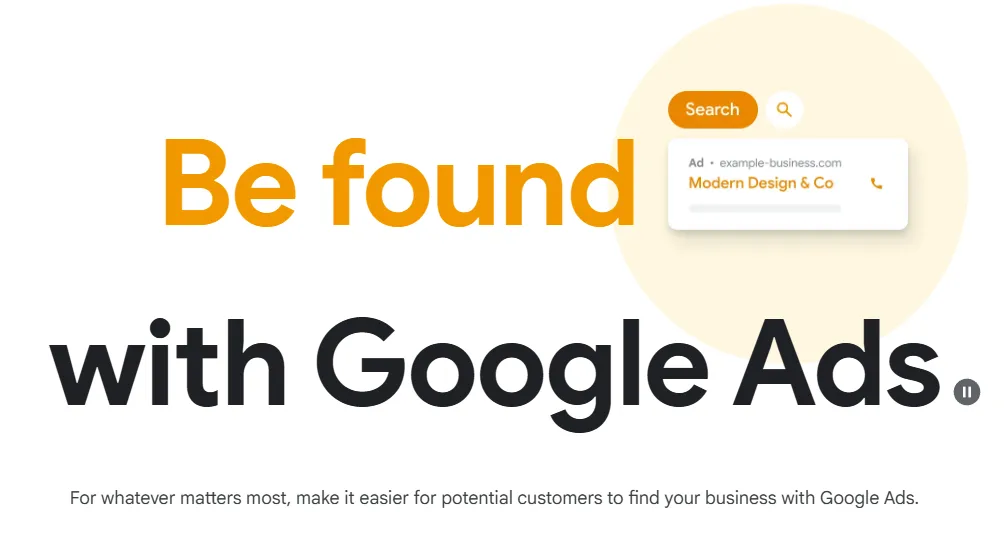Getting your first coaching clients or growing your coaching business can feel overwhelming. You might wonder how to get coaching clients consistently without spending a fortune on ads or wasting time on strategies that don’t deliver. The good news? The coaching industry is growing fast, with an estimated market size of $6.25 billion in 2024 and expected to reach $7.3 billion by 2025, showing plenty of opportunity for coaches like you to find new clients and build a successful coaching practice. Simple, practical steps can help you connect with your ideal coaching clients, build trust, and grow your coaching business steadily. From organic methods like social media posts and networking groups to paid ads and email marketing, these approaches make it easier to get coaching clients fast and keep them coming back.
Understanding Your Ideal Coaching Client
Before you can attract coaching clients, you need to know exactly who you want to work with. Defining your ideal coaching clients helps you focus your marketing efforts and speak directly to the people who will benefit most from your coaching services. Knowing exactly who your ideal client is allows you to identify where they spend their time, both online and offline, so you can tailor your marketing strategies and networking efforts effectively. Without this clarity, it’s easy to waste time chasing leads that aren’t a good fit.
Why Knowing Your Ideal Clients Matters
When you understand your ideal clients, you can tailor your messages, offers, and marketing channels to meet their needs. This makes it easier to attract the right people and build trust quickly.
How to Identify Your Ideal Coaching Clients
Start by asking yourself these questions:
Who benefits most from my coaching?
What problems do they face?
What goals do they want to achieve?
Where do they spend time online and offline?
Use surveys, interviews, or even social media polls to gather valuable insights. These insights help you understand common challenges and desires, allowing you to create coaching programs that truly resonate.
Create Detailed Client Profiles
Build client avatars that include:
Age, gender, and location
Job or role (e.g., small business owners, career coach clients)
Main challenges and pain points
Goals and motivations
Preferred communication channels (Facebook groups, email, etc.)
Align Your Coaching Niche With Your Ideal Clients
Your coaching niche should match the needs and interests of your ideal clients. For example, if you’re a health coach, your target audience might be busy professionals looking for simple fitness plans. If you’re a business coach, focus on small business owners or executives.
Follow other coaches who serve a similar audience to learn what works. Targeting the same audience as other successful coaches in your niche can help you attract ideal clients more effectively.
Quick Tips to Get Started
Write down your ideal client’s profile in detail.
Join Facebook groups or networking groups where they hang out.
Follow other coaches who serve a similar audience to learn what works.
With over 145,000 active coaches worldwide in 2024 and projected growth to 167,000 in 2025, knowing your ideal clients helps you stand out in a rapidly expanding market.
Building a Magnetic Coaching Brand

Your coaching brand is more than just a logo or website—it’s how potential clients see and feel about you. A strong, clear brand helps you stand out and makes it easier for ideal coaching clients to connect with you and your coaching services. Positioning yourself as a credible and approachable life coach can significantly increase your ability to attract more clients.
Craft a Clear Value Message
Start by explaining what you do and how you help clients in simple terms. Instead of vague phrases, focus on the real results you deliver. For example:
“I help busy professionals lose weight without dieting.”
“I guide small business owners to double their revenue in six months.”
This clear message helps potential clients quickly understand the benefits of working with you.
Be Authentic and Relatable
People want to work with coaches they trust. Share your story, struggles, and successes in a way that feels genuine. This builds connection and shows you understand what your clients are going through.
Visual Branding Basics
Make sure your website and social media profiles look professional and consistent. Use:
A simple, clean logo
Consistent colors and fonts
High-quality photos of yourself
Easy-to-read fonts and layouts
Your brand visuals should match the tone of your coaching niche. For example, a fitness coach might use bright, energetic colors, while a career coach might choose more professional, calming tones.
Use Social Media to Build Your Brand
Pick one or two social media platforms where your ideal clients spend time—like Facebook groups for life coaching clients or LinkedIn for business coaches. Being active on multiple social media channels can help you increase your reach, build awareness, and attract more clients to your coaching business.
Share:
Helpful tips and advice
Client success stories
Behind-the-scenes looks at your coaching sessions
Personal posts that show your personality
Show Social Proof
Testimonials and success stories from satisfied clients build trust fast. Ask your first coaching clients for feedback and permission to share their stories. Video testimonials or before-and-after stories work especially well on social media.
Leverage Coaching Directories
In addition to your website and social media, getting listed on a reputable coaching directory can increase your visibility and credibility. Many potential clients use coaching directories to find trusted coaches in their area or niche, making it a valuable tool to attract coaching clients.
Quick Brand-Building Tips
Keep your messaging simple and focused on client benefits.
Be consistent with your visuals and posting schedule.
Engage with your audience by replying to comments and messages.
Update your website regularly with fresh content like blog posts or videos.
With 92% of certified coaches continuing their practice and 75% of coaches reporting better work performance and communication, a strong brand helps you tap into this thriving coaching ecosystem.
Creating a High-Converting Coaching Offer

Your coaching offer is what turns interested people into paying coaching clients. Structuring your offer to attract paying clients ensures you are working with individuals who are committed to their growth and willing to invest in your services. It needs to clearly solve a problem your ideal clients face and show them the value they’ll get from working with you.
Design Packages That Fit Your Clients’ Needs
Think about the specific results your clients want. For example:
A life coaching business might offer a “Confidence Boost” 6-week program.
A business coach could create a “Start Your Small Business” 3-month package.
Offer different formats like one-on-one coaching, group coaching, or workshops to meet different preferences and budgets.
Set Prices That Match Your Value
Pricing can be tricky. Consider:
Tiered pricing with basic and premium options
Payment plans to make coaching more accessible
Value-based pricing that reflects the transformation clients get, not just your time
Don’t undervalue your coaching skills—clients who pay are more likely to commit and get results.
Position Your Offer Clearly
Make your offer easy to understand. Use simple language to explain:
What’s included (number of coaching sessions, materials, support)
The outcomes clients can expect
How it’s different from other coaches’ offers
Use Beta Clients to Refine Your Offer
If you’re just starting, invite a few people to join your coaching program at a discounted rate or for free in exchange for feedback and testimonials. Landing your first paying coaching clients is a crucial milestone for validating your coaching business. This helps you improve your offer and build social proof.
Add Bonuses to Increase Value
Consider adding extras like:
Free coaching sessions
Worksheets or guides
Access to a private Facebook group
Bonuses make your offer more attractive and encourage people to sign up faster.
Quick Tips for Creating Your Offer
Focus on solving one main problem per offer.
Be clear about what clients will achieve.
Test your offer with beta clients before launching fully.
Use testimonials to build trust and credibility.
A well-crafted coaching offer helps you attract coaching clients who are ready to invest in their growth and your coaching program. The average hourly coaching fee is about $256, reflecting the high value clients place on effective coaching programs
Mastering Organic Client Acquisition
Attracting coaching clients without spending a lot on ads is possible when you use the right organic strategies. These methods build trust, showcase your coaching skills, and help you connect with your ideal coaching clients naturally.
SEO and Content Marketing for Coaches

Why SEO Matters
Search engines like Google are a powerful way to get coaching clients online. When your website and blog posts rank well, potential clients find you when they search for coaching services.
How to Start with Keyword Research
Use tools like Google Keyword Planner or Ahrefs to find what your ideal clients are searching for. Look for keywords like “how to get coaching clients,” “life coaching clients,” or “business coach near me.”
Create Helpful Blog Posts
Write blog posts that answer common questions or solve problems your potential clients face. For example:
“5 Tips to Attract Coaching Clients Fast”
“How to Find Your Ideal Coaching Clients Online”
Make sure your posts include your keywords naturally and have clear headings.
On-Page SEO Basics
Use keywords in your page titles and meta descriptions.
Add internal links to other helpful pages on your site.
Make sure your site loads fast and works well on mobile devices.
Build Backlinks
Reach out to other coaches or related websites and offer to write a guest post. This helps you get backlinks, which improve your site’s authority and ranking.
Leveraging Social Media Organically
Choose the Right Platforms
Focus on where your ideal coaching clients spend time. For example, Facebook groups are great for life coaching clients, while LinkedIn works well for business coaches and executive coaches. Engaging with platforms or podcasts that already have an existing audience can help you expand your reach and attract new clients.
Join and Engage in Facebook Groups
Participate in conversations, answer questions, and share helpful tips without being salesy. This builds your reputation as a trusted coach.
Create Valuable Social Media Posts
Share:
Quick coaching tips
Success stories from satisfied clients
Behind-the-scenes looks at your coaching sessions
Invitations to free sessions or webinars
Use images, videos, and stories to keep your posts engaging.
Build Relationships
Respond to comments and messages quickly. The more you engage, the more likely people are to reach out for coaching.
Building and Nurturing an Email List
Why Email Marketing Works
Email lets you stay in touch with potential clients and guide them through your coaching journey at their own pace.
Create a Lead Magnet
Offer something valuable for free, like a checklist or mini-course, in exchange for email addresses. For example, “10 Steps to Get Your First Coaching Client.”
Set Up an Opt-In Funnel
Use simple landing pages with clear calls to action. Keep the form short to encourage sign-ups.
Send Automated Nurture Emails
Create a sequence that:
Welcomes new subscribers
Shares helpful tips and success stories
Invites them to book a free consultation or coaching session
Personalize Your Emails
Segment your list based on interests or engagement to send relevant content that speaks directly to your potential coaching clients.
Paid Marketing Strategies to Accelerate Growth

Sometimes, organic methods take time to show results. If you want to get coaching clients fast, paid advertising can give your coaching business a quick boost. When done right, paid ads help you reach your ideal coaching clients and generate coaching leads efficiently. Paid advertising can be a powerful tool to attract coaching clients fast, especially when combined with strong organic marketing and a clear coaching offer. Hosting your own webinars as part of your paid marketing strategy is highly effective for building trust and increasing sales.
Choosing the Right Paid Advertising Platforms
Facebook and Instagram Ads: Great for reaching life coaching clients, health coaches, and fitness coaches. These platforms allow detailed targeting based on interests, behaviors, and demographics.
LinkedIn Ads: Ideal if you’re a business coach, career coach, or executive coach looking to connect with professionals and small business owners.
Google Ads: Perfect for targeting people actively searching for coaching services like “business coach near me” or “life coaching program.”
Targeting Your Ideal Coaching Clients
Use custom audiences by uploading your email list or website visitors.
Create lookalike audiences to reach new people similar to your existing clients.
Retarget visitors who showed interest but didn’t book a session or buy your coaching program.
Crafting Ads That Convert
Focus on clear benefits and the transformation your coaching offers.
Use simple, direct language that speaks to your ideal clients’ pain points.
Include a strong call to action, like “Book your free consultation today” or “Join my coaching program now.”
Use eye-catching images or short videos featuring you or client success stories.
Retargeting for Better Results
Set up retargeting campaigns to show ads to people who visited your website or engaged with your social media posts.
Remind them of your free sessions, coaching program, or upcoming webinar.
Running Affiliate and Referral Programs
Encourage satisfied clients or complementary businesses to refer clients to you.
Offer incentives like discounts, free sessions, or bonuses for every successful referral.
Budgeting and Tracking Your Ads
Start with a small daily budget and test different ads to see what works best.
Track key metrics like click-through rates, cost per lead, and conversion rates.
Adjust your targeting, ad copy, and creative based on performance data.
Quick Tips for Paid Ads Success
Keep your ads simple and focused on one clear message.
Use testimonials or success stories to build trust.
Always include a clear next step for potential clients to take.
Paid advertising can be a powerful tool to attract coaching clients fast, especially when combined with strong organic marketing and a clear coaching offer.
Networking and Offline Client Acquisition

While online marketing is powerful, don’t overlook offline strategies. Building relationships in person and through your existing network can bring in new coaching clients and help grow your coaching business steadily. In fact, many coaches successfully use referrals and networking to expand their client base and establish credibility.
Leverage Your Existing Network
Start with people you already know—friends, family, colleagues, and past clients. Let them know about your coaching services and ask if they know anyone who might benefit. Sometimes, a simple conversation can lead to referrals.
Join Networking Groups and Professional Associations
Look for local or online networking groups relevant to your coaching niche. For example:
Business coaches can join chambers of commerce or small business owner groups.
Life coaches might find value in wellness or personal development meetups.
Attend meetings regularly, share your expertise, and build genuine connections.
Host Workshops, Webinars, or Free Sessions
Organize events where you can showcase your coaching skills and provide value upfront. This could be a free workshop at a local gym for fitness coaches or a webinar for career coaches. These events help you meet potential clients and build trust.
Partner with Complementary Businesses
Form partnerships with businesses that serve your ideal clients but don’t directly compete with you. Examples include:
A health coach partnering with a local gym or nutritionist.
A business coach collaborating with an accountant or marketing agency.
These partnerships can lead to client referrals and joint events.
Create a Referral System
Encourage satisfied clients and partners to refer new clients by offering incentives like discounts or free coaching sessions. Make it easy for them by providing referral cards or email templates.
Quick Tips for Offline Client Acquisition
Always carry business cards or flyers to share.
Follow up promptly with new contacts.
Be genuine and focus on building relationships, not just selling.
Keep track of where your clients come from to know which offline strategies work best.
Offline strategies combined with your online efforts create a well-rounded approach to attracting coaching clients.
Optimizing Client Conversion and Booking
Getting potential clients interested is just the start. To grow your coaching business, you need to turn those leads into paying coaching clients by making the booking and conversion process smooth and effective.
Use Easy Scheduling Tools
Make it simple for potential clients to book a free consultation or coaching session. Tools like Calendly let clients see your availability and book directly without back-and-forth emails. Automate reminders to reduce no-shows.
Structure Your Discovery Calls for Success
Your discovery call is your chance to connect, understand their needs, and show how your coaching program can help. Here’s a simple flow to follow:
Warmly welcome your prospect and build rapport.
Ask open-ended questions to learn about their challenges and goals.
Share how your coaching sessions and program address their needs.
Handle any questions or concerns with empathy.
Clearly explain the next steps and invite them to join your coaching program.
Handle Objections with Confidence
Common objections include price, time, or uncertainty about coaching. Listen carefully and respond honestly. For example, if price is a concern, highlight the value and transformation your coaching provides. Offer payment plans if possible.
Create a Seamless Onboarding Experience
Once a client signs up, make their first days easy and welcoming. Send a welcome email with session details, goals worksheets, and any resources they’ll need. This sets the tone for a positive coaching journey and reduces drop-offs.
Quick Tips to Boost Conversion
Be clear and confident about your coaching value.
Use testimonials during calls to build trust.
Follow up within 24 hours if someone doesn’t book after a call.
Keep communication friendly and professional.
Optimizing how you convert and book clients helps turn interest into paying coaching clients and builds a strong foundation for your coaching business.
Retaining Coaching Clients and Building Long-Term Relationships
Getting coaching clients is just the beginning. Keeping them engaged and satisfied helps your coaching business grow through repeat sessions, referrals, and positive word of mouth. Many successful coaches have built thriving businesses by prioritizing client retention and fostering long-term relationships.
Why Client Retention Matters
Satisfied clients are more likely to continue coaching with you, refer others, and share success stories that attract new coaching clients. Building long-term relationships saves you time and marketing costs.
Keep Clients Engaged with Regular Check-Ins
Schedule follow-up sessions or quick check-ins to track progress and adjust coaching plans. This shows you care and keeps clients motivated.
Offer Upsells and Continuity Programs
Once clients see results, offer additional coaching packages, group coaching, or membership programs. These options provide ongoing support and increase your coaching revenue.
Collect and Use Client Feedback
Ask clients for feedback after coaching sessions or programs. Use their input to improve your coaching services and gather testimonials to build trust with potential coaching clients.
Show Appreciation and Build Loyalty
Send personalized thank-you notes, celebrate milestones, or offer exclusive content. Small gestures make clients feel valued and encourage them to stay longer and refer others.
Quick Tips for Client Retention
Be responsive and available for questions.
Celebrate client wins publicly (with permission).
Keep communication clear and positive.
Provide consistent value beyond sessions.
Focusing on retention turns your coaching clients into loyal fans who help your coaching business thrive.
Measuring Success and Scaling Your Coaching Business

Tracking your progress helps you understand what’s working and where to improve. It also guides you when it’s time to grow your coaching business.
Key Metrics to Track
Lead volume: How many potential coaching clients are you attracting?
Conversion rates: What percentage of leads become paying coaching clients?
Client retention: How many clients continue coaching or buy additional sessions?
Lifetime value: How much revenue does each client bring over time?
Use Analytics Tools
Tools like Google Analytics, Facebook Insights, and email marketing reports help you see how visitors find you and engage with your content. This data shows which marketing strategies bring the best coaching leads.
When and How to Scale
Once you have steady coaching clients and a proven marketing strategy, consider scaling by:
Increasing your paid ads budget to reach more potential clients.
Hiring assistants or virtual team members to handle scheduling, marketing, or client support.
Expanding your coaching programs or adding new services.
Automate Repetitive Tasks
Use CRM systems and marketing automation tools to streamline client management and follow-ups. Automation saves time and keeps your coaching practice running smoothly.
Quick Tips for Growth
Regularly review your key metrics to spot trends.
Test new marketing channels carefully before investing heavily.
Keep your coaching skills sharp to maintain client satisfaction.
Stay connected with your ideal coaching clients through email and social media.
Measuring success and scaling thoughtfully helps you build a coaching business that lasts and keeps attracting coaching clients.
Conclusion
Attracting coaching clients takes focus and consistent effort, but it’s completely doable. By knowing your ideal coaching clients, building a clear brand, crafting offers that solve real problems, and using both organic and paid marketing strategies, you set yourself up for success. Don’t forget the power of networking, smooth client conversion, and keeping your clients engaged long term. Tracking your progress and scaling your coaching business thoughtfully will help you grow steadily and sustainably.
If you want to boost your coaching business even further, consider our DIY SEO course designed specifically for coaches. It’s a step-by-step program that helps you master SEO benefits and get coaching clients online without relying solely on paid ads. Sass and SEO specializes in SEO for coaches, making it easier to attract coaching leads and grow your online coaching business.
Frequently Asked Questions (FAQs)
1. How can I get my first coaching clients?
Start by identifying who your ideal clients are and where they spend time. Offer free sessions or consultations to build trust and gather testimonials. Engage in relevant groups and networking events to connect with potential clients.
2. What’s the best way to attract coaching clients online?
Focus on SEO to help your website rank for coaching-related searches. Share valuable content on social media and join groups where your ideal clients hang out. Build an email list and nurture leads with helpful emails.
3. Should I use paid ads to find coaching clients?
Paid ads can speed up client acquisition if targeted well. Start with a small budget and test your ads for best results. Combine ads with organic marketing to maximize your reach.
4. How do I price my coaching services?
Set prices based on the value and transformation you offer, not just time spent. Offer tiered packages and payment plans to suit different budgets. Don’t undervalue your expertise.
5. How can I keep coaching clients long term?
Stay engaged with regular check-ins and celebrate their progress. Offer additional programs or group coaching for ongoing support. Show appreciation and ask for feedback to build loyalty.





